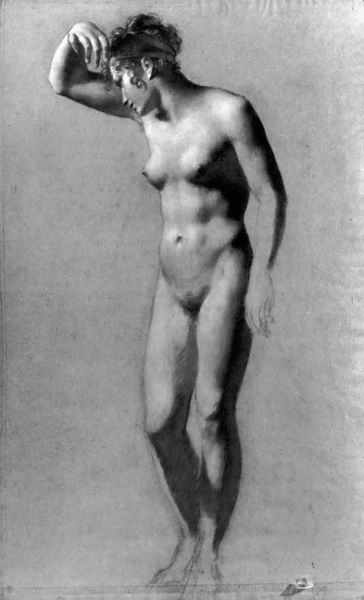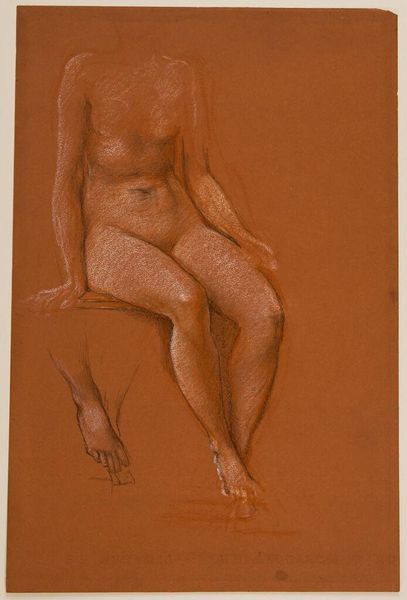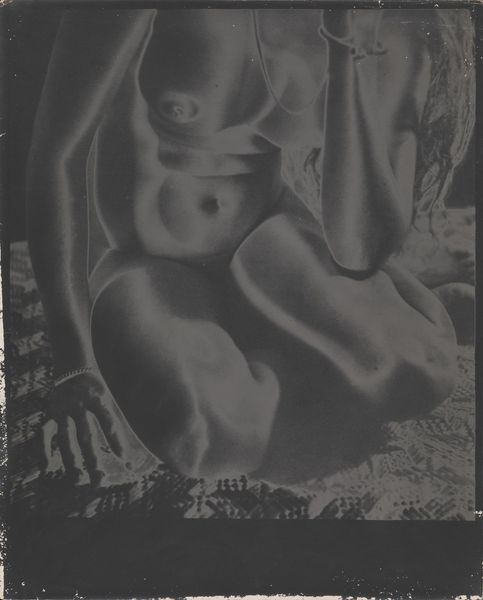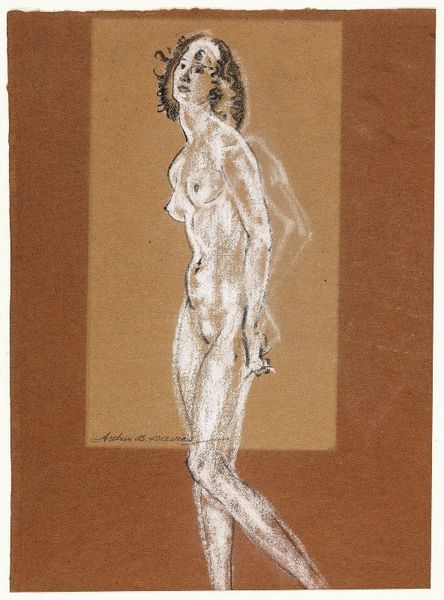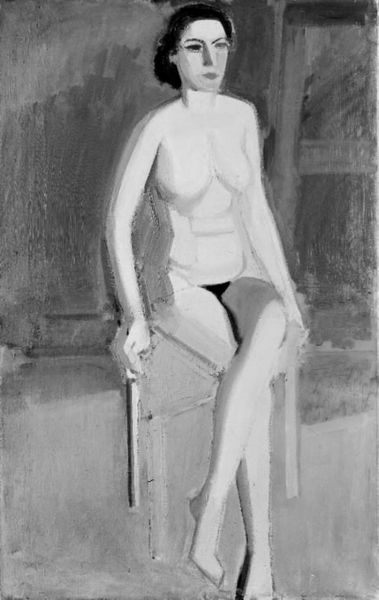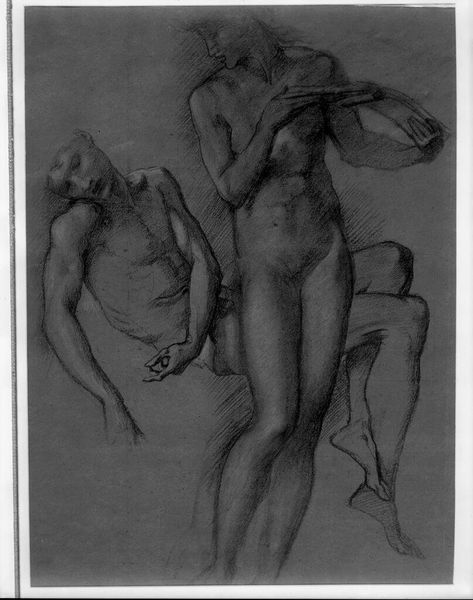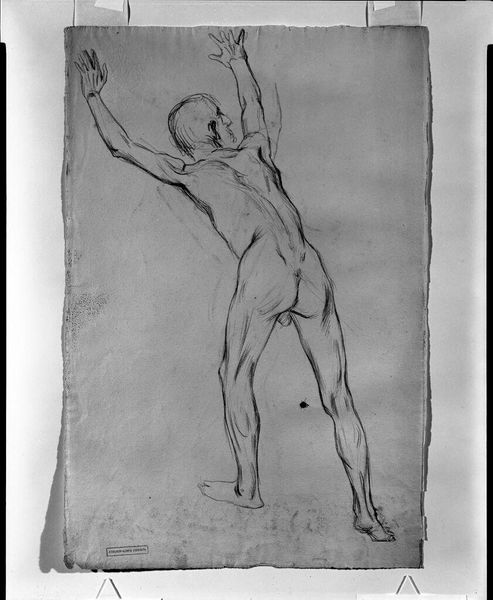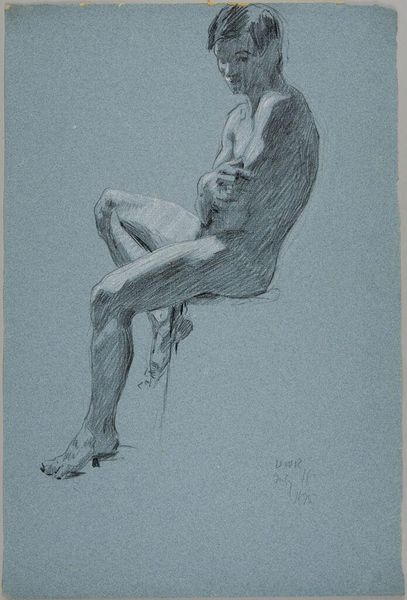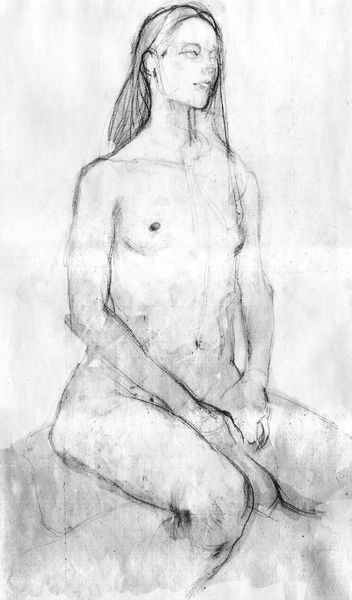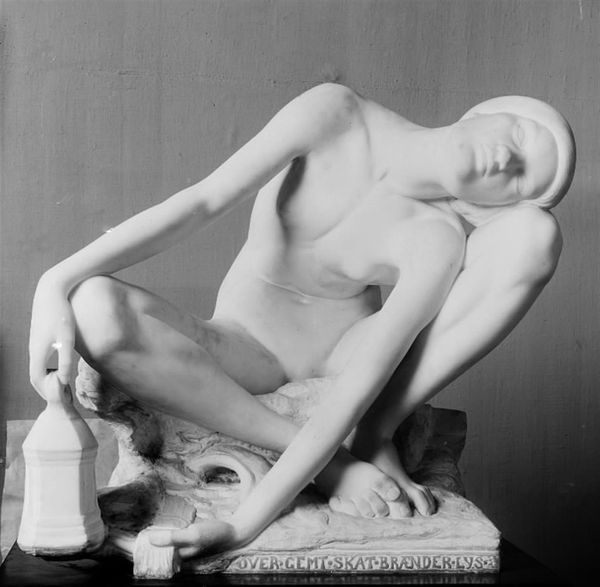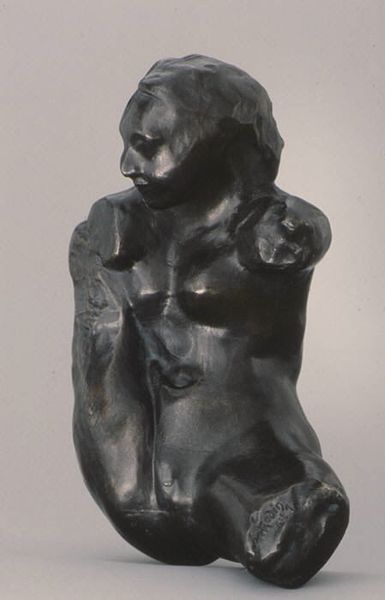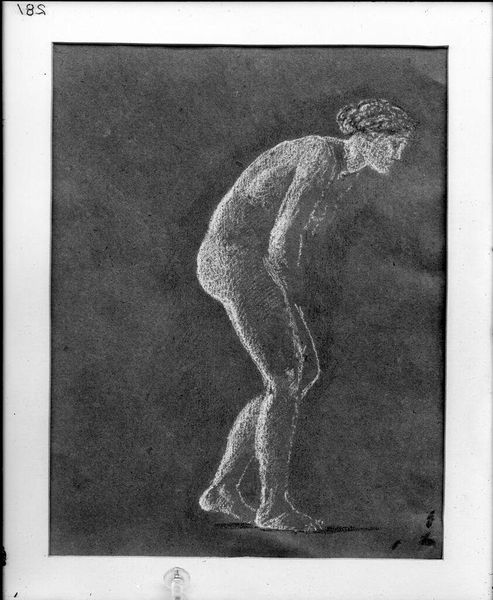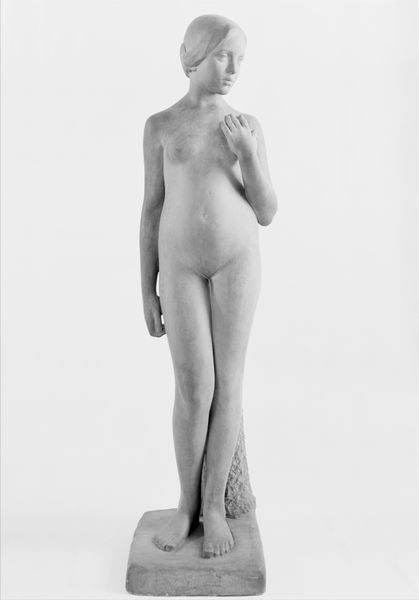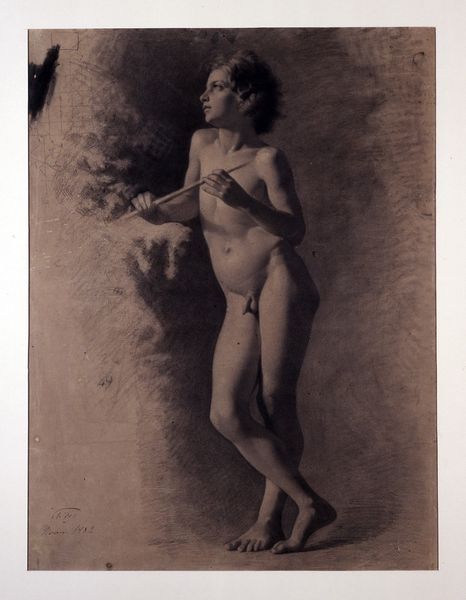
relief, bronze, sculpture
#
sculpture
#
relief
#
bronze
#
figuration
#
female-nude
#
sculpture
#
symbolism
#
decorative-art
#
nude
Dimensions: 5 × 3 3/16 in. (12.7 × 8.1 cm)
Copyright: Public Domain
Editor: This bronze relief is entitled "Known as 'Sleep'," and it was crafted by Alexandre-Louis-Marie Charpentier between 1885 and 1899. I’m immediately struck by its somber and dreamy mood, the way the figure seems to be sinking into the background. What do you see in this piece? Curator: This work encapsulates a symbolic and emotional exploration of sleep. Notice how the artist doesn’t merely represent a body at rest. Instead, through the allegorical treatment of the female figure and the flowing lines around her, sleep becomes a deeper symbol, almost a psychic state. How does the style influence your reading of its subject? Editor: The female nude reminds me of symbolist paintings and maybe pre-Raphaelite art, a bit melancholic. It feels like more than just depicting rest but almost something spiritual? Curator: Precisely! The artist evokes a tradition of associating sleep with psychological and even spiritual realms. The flowing lines and soft forms might symbolize a drifting into unconsciousness, a transition to a world governed by emotions and primal states. This style suggests more than just aesthetic preference; it is linked to deep cultural and philosophical traditions that connect sleep to human potential, even divinity. Editor: It’s interesting to see it that way. I suppose it reflects how, across cultures, sleep has never just been about biology, right? Curator: Absolutely. The iconography reveals a shared understanding – that through our dreams, we gain access to hidden aspects of ourselves. The female form adds another layer; historically linked to intuition, she becomes a symbol for subconscious depths. This piece reveals a great deal about how we interpret not only art but also universal human experiences through culturally constructed lenses. Editor: That's made me see how images aren't just images – they carry layers of historical and personal significance. Curator: Indeed, every form and symbol invites an exploration of how culture shapes individual and collective memory, informing our understanding.
Comments
No comments
Be the first to comment and join the conversation on the ultimate creative platform.
